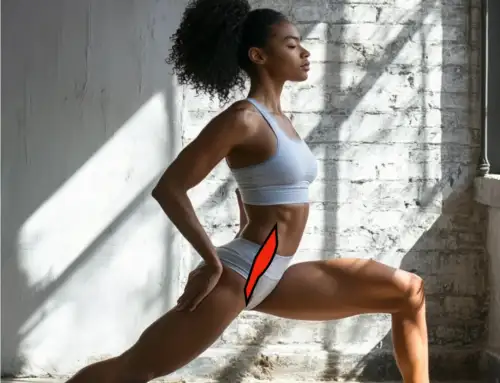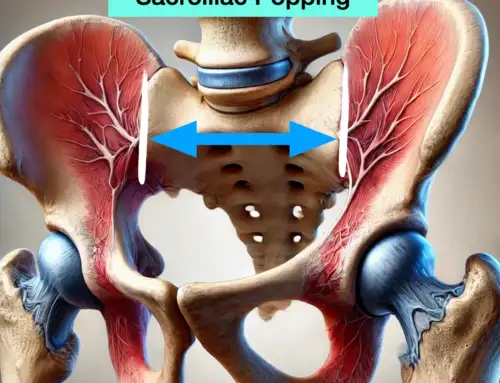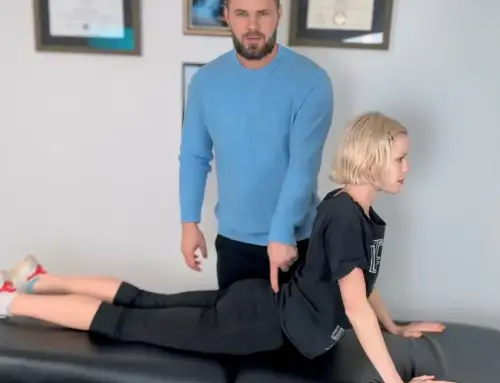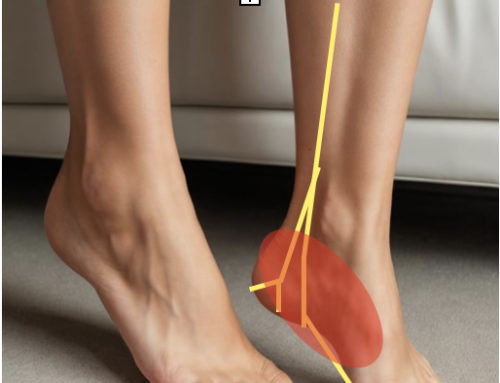Pregnancy Hip Pain: Common Causes and Pain Relief for Pregnant Women
Hip Pain During Pregnancy is rampant for pregnant women in their second and third trimesters as the pelvic girdle prepares for birth by hormonally relaxing the ligaments. Hip pain during pregnancy can be felt on the back of the hip and associated with back pain or pelvic pain. Hip pain can be a gradual dull ache or a sudden sharp pain.
Scroll down self-help treatments and common relief positions for hip pain during pregnancy.
Cat-Cow Exercise
The exercise is a joint pumping exercise that gently and rhythmically mobilizes the low back facet joints responsible for pelvic and hip pain during pregnancy.
To perform this exercise:
- Gently rock your pelvis into an anterior and posterior tilt (tuck tail) back and forth several times daily to keep the low back joints healthy.
- This exercise is a gentle spinal mobilization, not an aggressive stretch.
- Great for second and third trimesters of pregnancy.
Upper Back Stretch
Keeping mobility in the upper back helps distribute the increased load on the low back as the uterus grows.
1) In a seated position to lock the pelvis, gently twist the upper body around the low back several times daily.
2) This is a gentle mobilization rather than an aggressive stretch
Child Pose and Pelvic Floor
This exercise relaxes the pelvic floor while the diaphragm depresses. This process is crucial during labor, so the pelvic floor doesn’t resist and helps prevent perineum tears.
- Take deep abdominal breaths that you feel deep into the pelvic floor and bladder.
- Try to relax the pelvic floor while taking deep breaths and performing several times daily during the third trimester.
Hip Butterflies
Raise and lower the knee like a butterfly’s wings in a seated position to keep hips mobile. This exercise is excellent for stretching the hip joint capsule (iliofemoral ligament), which can become stiff during pregnancy.
Fire Hydrant Hip Exercise
This exercise strengthens the gluteus maximus and gluteus medius.
- While in a quadruped position, lift one leg like a dog peeing on a fire hydrant.
- Try lifting the leg without rotation or extension in the spine to avoid additional spinal loading.
Hip Flexor Stretch
This gentle stretch is an easy way to stretch the hip flexors and mobilize the femoral nerve and lateral femoral cutaneous nerve that cause hip pain.
- In a standing position, gently rock forward until a gentle stretch on the front of the upper thigh is felt.
- Perform this hip stretch only to the first stretch sensation and hold the stretch for less than a second. Aggressive stretching can increase femoral nerve pain.
Adductor Stretch
This gentle hip adductor stretch is similar to hip flexor stretch but a lateral movement to emphasize the hip adductors and obturator nerve.
Causes of hip pain and pelvic pain during pregnancy
While a pregnant mother’s womb grows and the baby’s weight increases, pain can be present in the hip, back, and pelvic girdle. The most common causes of hip pain include:
- Postural changes- As the uterus grows and displaces mass to the front of the body, the low back joints take on additional stress, creating back and hip pain. The weight of the uterus also compresses the low back joints.
Sciatic nerve- Compression due to increased pressure can lead to hip pain, leg pain with numbness or tingling down the back of the hip and thigh (sciatica) - Cluneal Nerve– These nerves are cutaneous nerves that start from the low back and travel down to supply the skin over the hips. Due to the compression of the joints on the low back, these nerves can cause dull or sharp pain in the hips.
Femoral Nerve- this motor and the sensory nerve can be compressed by the growing uterus and cause pain in the front of the hips and tingling. - Meralgia Parasthetica– compression of the lateral femoral cutaneous nerve as it exits the pelvis and causes pain, numbness, and burning down the side of the hip into the area over the IT
band. - Obturator Nerve– This nerve runs down the inner thigh to supply the adductor muscles and can become painful during pregnancy.
When to ask a Doctor?
Hip pain during pregnancy is frequent and usually transient. If the pain of any kind is severe enough to limit walking, exercise, or sleeping, then seek consultation from a doctor. Also, ask your doctor about pains that feel like contractions, vaginal discharge, or fevers.
Prevention
Motion is lotion, and movement is medicine!
The best way to prevent hip pain during pregnancy is to keep moving, exercise, and have adequate mobility to all the joints of the spine, pelvis, and hips. Being diligent with these exercises will help prevent pubic symphysis pain, diastasis recti, and pelvic pain during pregnancy.
Our editorial practices include evidence-based practices, interventions, and recommendations.





